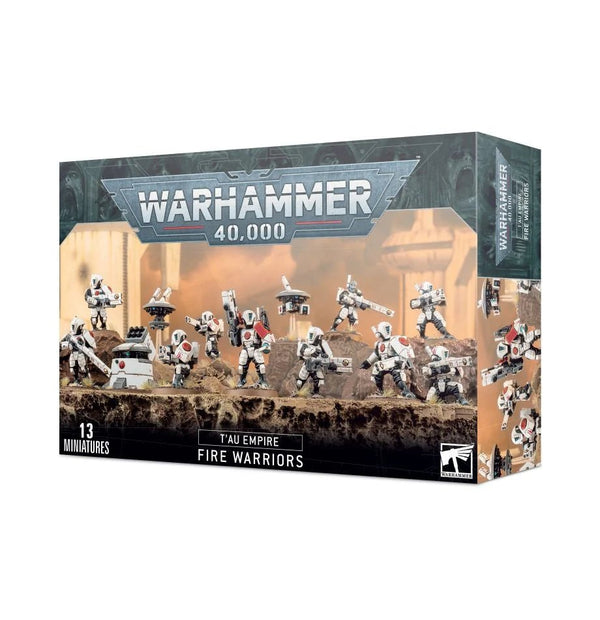Recommended Paint
Product title
Vendor
£19.99 | £24.99
Product title
Vendor
£19.99 | £24.99
Product title
Vendor
£19.99 | £24.99
Product title
Vendor
£19.99 | £24.99
Product title
Vendor
£19.99 | £24.99
Product title
Vendor
£19.99 | £24.99
Product title
Vendor
£19.99 | £24.99
Product title
Vendor
£19.99 | £24.99
Product title
Vendor
£19.99 | £24.99
Product title
Vendor
£19.99 | £24.99
Product title
Vendor
£19.99 | £24.99
Product title
Vendor
£19.99 | £24.99
Product title
Vendor
£19.99 | £24.99
Product title
Vendor
£19.99 | £24.99
Product title
Vendor
£19.99 | £24.99
Product title
Vendor
£19.99 | £24.99
Not only is the path ahead illuminated by the light of the Greater Good, but also the glow of pulse rifles. The courageous Fire Warriors, with the absolute, zealous belief in the destiny of their race, fight with unstoppable fervour and enviable skill. Benefiting from the astonishing rate of technological advance displayed by T'au engineers, their armour is lightweight yet durable and their weaponry reliable yet powerful. A Fire Warrior Strike Team is a high-speed detachment of shock troops who lay down sheets of withering pulse rifle fire, throwing electromagnetic pulse grenades and aiming powerful tactical support turrets at a rapidly-depleting foe.
Product title
Vendor
£19.99 | £24.99
Product title
Vendor
£19.99 | £24.99
Product title
Vendor
£19.99 | £24.99
Product title
Vendor



















